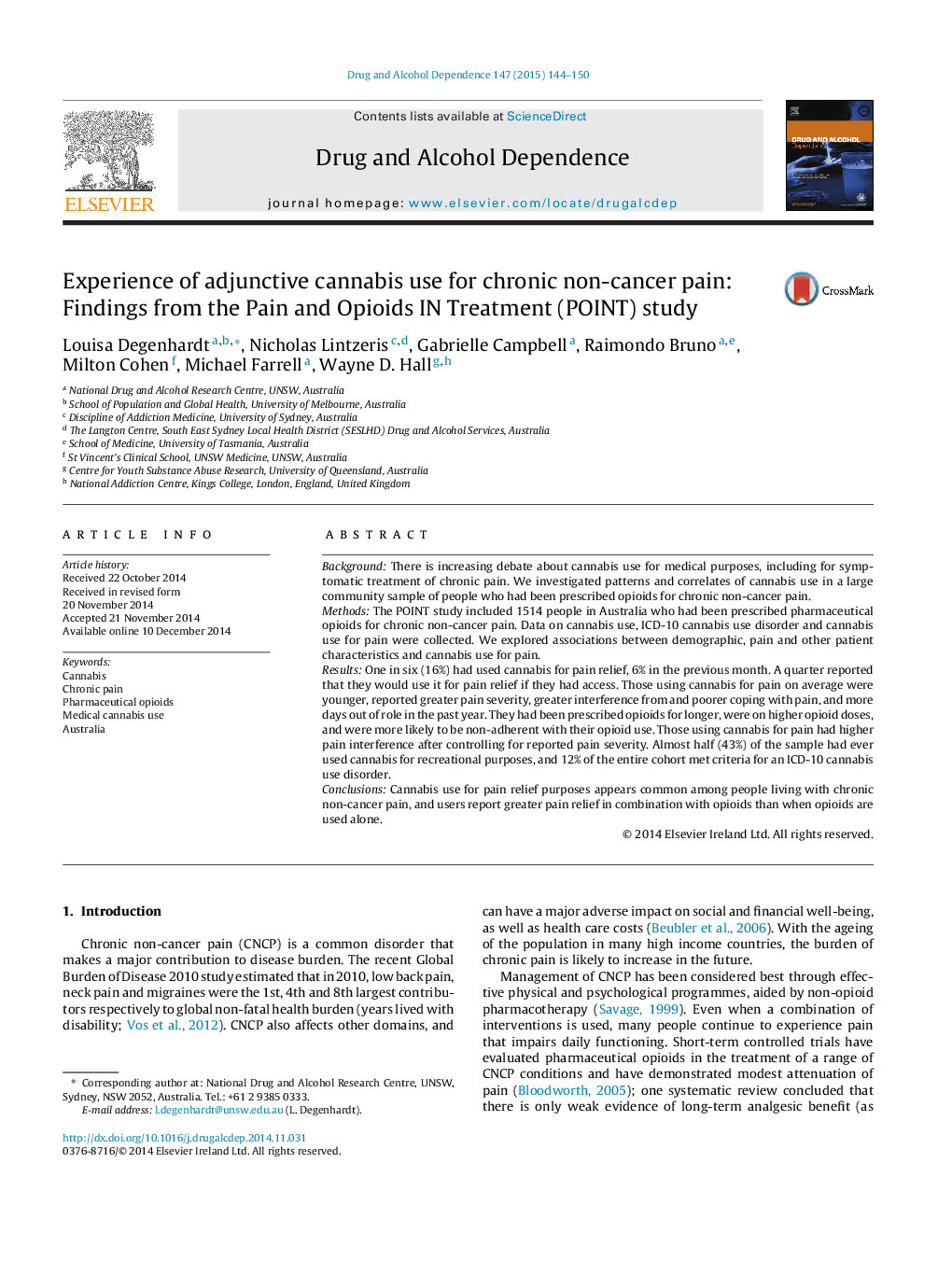| کد مقاله | کد نشریه | سال انتشار | مقاله انگلیسی | نسخه تمام متن |
|---|---|---|---|---|
| 1069883 | 1486144 | 2015 | 7 صفحه PDF | دانلود رایگان |
• There is increasing debate about the use of cannabis for medical purposes, including chronic non-cancer pain (CNCP).
• In 1514 people prescribed opioids for CNCP, 16% had used cannabis for pain.
• A quarter reported that if they had access to cannabis, they would use it for pain relief.
• Those using cannabis for pain were younger, with greater pain severity and interference.
• They had been prescribed opioids for longer and were on higher opioid doses.
BackgroundThere is increasing debate about cannabis use for medical purposes, including for symptomatic treatment of chronic pain. We investigated patterns and correlates of cannabis use in a large community sample of people who had been prescribed opioids for chronic non-cancer pain.MethodsThe POINT study included 1514 people in Australia who had been prescribed pharmaceutical opioids for chronic non-cancer pain. Data on cannabis use, ICD-10 cannabis use disorder and cannabis use for pain were collected. We explored associations between demographic, pain and other patient characteristics and cannabis use for pain.ResultsOne in six (16%) had used cannabis for pain relief, 6% in the previous month. A quarter reported that they would use it for pain relief if they had access. Those using cannabis for pain on average were younger, reported greater pain severity, greater interference from and poorer coping with pain, and more days out of role in the past year. They had been prescribed opioids for longer, were on higher opioid doses, and were more likely to be non-adherent with their opioid use. Those using cannabis for pain had higher pain interference after controlling for reported pain severity. Almost half (43%) of the sample had ever used cannabis for recreational purposes, and 12% of the entire cohort met criteria for an ICD-10 cannabis use disorder.ConclusionsCannabis use for pain relief purposes appears common among people living with chronic non-cancer pain, and users report greater pain relief in combination with opioids than when opioids are used alone.
Journal: Drug and Alcohol Dependence - Volume 147, 1 February 2015, Pages 144–150
